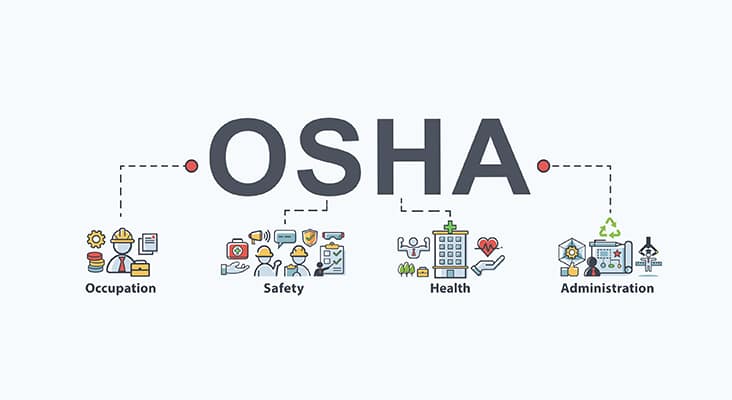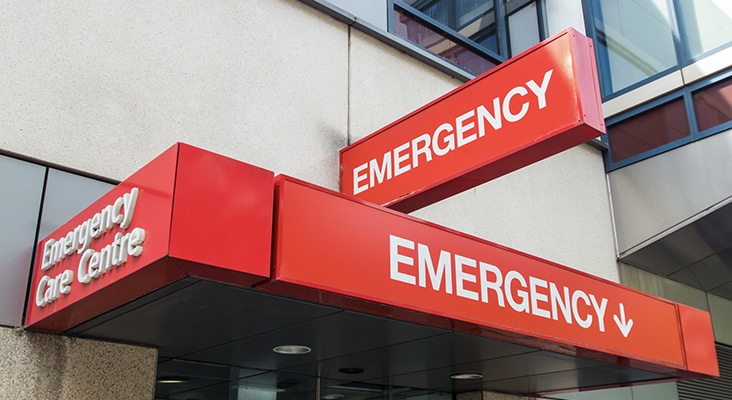Safety in the Workplace
Safety in the workplace is critical for oral health professionals and patients in the provision of care.

Safety in the workplace is critical for oral health professionals and patients in the provision of care. Experts at the United States Centers for Disease Control and Prevention (CDC) and Occupational Safety and Health Administration (OSHA) provide evidence-based rules, recommendations, and guidelines designed to ensure workplace safety. This article will focus on the safety aspects related to preventing and managing infection control exposure incidents.
Photo Credit: Canan turan / iStock / Getty Images Plus

Microorganisms that Cause Disease
Bloodborne pathogens are microorganisms that are present in human blood and can cause disease; consequently, OSHA mandates protection for all oral health professionals exposed to bloodborne pathogens and other potentially infectious materials (OPIM) in the workplace, such as human immunodeficiency virus (HIV), hepatitis B virus (HBV), and hepatitis C virus (HCV). The BBP standard requires employers to provide employees with personal protective equipment (PPE), such as gloves, masks, protective eyewear, protective garments (eg, lab coats—including their laundering), HBV vaccination, safe work practices (including safety devices, such as sharps containers and needle recapping devices), and annual training.
Photo Credit: image_jungle / iStock / Getty Images Plus

Coming Up With a Plan
Employers are responsible for having written policies and procedures that demonstrate compliance with OSHA standards, and these policies must be accessible to employees at all times. Known as an exposure control plan (ECP), the written policy should outline how various procedures will be performed safely in the office. Infection control policies may be added to this document to make it convenient for staff. An annual review of OSHA and infection control policies and procedures is the first step in providing a safe environment for oral health professionals and patients.
Photo Credit: https://www.facebook.com/PlargueDoctor / iStock / Getty Images Plus

Ensure Proper Training
Employers must comply with specific OSHA training requirements. Training on the BBP standard must be made available to employees during their regular working hours at no charge. It also must be provided upon hire before any tasks involved with occupational risk occur. Additionally, training must take place on an annual basis (minimally), and when any new tasks or procedures are implemented. The training material must be provided in a language and at a level the employee can understand, and an opportunity to ask questions must be provided. The person conducting the training must possess knowledge of the epidemiology, symptomology, modes of transmission of BBPs, vaccinations, and post-exposure prophylaxis. The trainer must also review the ECP and provide site-specific information on how the OSHA and infection control procedures are implemented in the facility.
Photo Credit: designer491 / iStock / Getty Images Plus

Prevent Exposure
The best way to prevent exposure incidents is to avoid contact with blood and OPIM through the use of safety devices (ie, engineering controls) and safe working behaviors (ie, work practice controls). Engineering controls include needle recapping devices and sharps containers. Work practice controls include using a one-handed-scoop method for needle recapping, not passing a needle during four-handed dentistry, and the use of retraction devices vs finger retraction. Although further research is needed, Alvear Fa and Cuny reported a reduction in needlestick exposures with the use of dental mirrors as a retraction device.
Photo Credit: golubovy / iStock / Getty Images Plus

Post-Exposure Plan
Exposure incidents should be treated as a medical emergency and evaluated by a qualified health care provider immediately after—or as soon as possible after—the exposure. The first step in handling an exposure incident is to perform basic first aid, such as flushing the area with water for mucous membranes and/or using soap and water to wash percutaneous injuries.4 It is the employee’s responsibility to immediately report the incident to the office’s designated infection control coordinator, safety officer, or senior employee, so that post-exposure management can be initiated quickly. This individual should write a report about the incident, including the date and time of exposure, details about the incident and how it occurred, information about the severity of the exposure, whether the source material was known, and status of the exposed individual’s vaccination record. This report should accompany an exposed worker to an evaluation appointment with a qualified health care provider who can assess the risk of exposure and recommend any further treatment or follow up. Despite safe work behaviors, exposure incidents occasionally occur, and oral health professionals should not hesitate to report such incidents.

